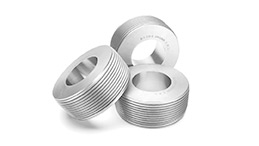
Dec . 05, 2024 15:02
Back to list
high pressure regulators
Understanding High Pressure Regulators An Essential Component in Gas Systems
High pressure regulators are critical devices used in various industrial applications where gases are utilized. These regulators play a pivotal role in ensuring safety and efficiency by controlling the pressure of gas delivered from high-pressure sources to lower pressure systems. This article will explore the function, applications, types, and importance of high pressure regulators in gas handling.
What is a High Pressure Regulator?
A high pressure regulator is a device that reduces the high inlet pressure of gas to a more manageable and usable outlet pressure. These regulators typically have an inlet pressure that can exceed 2000 psi or more, depending on the application. The primary function of a high pressure regulator is to maintain a consistent output pressure despite fluctuations in inlet pressure and changes in gas demand downstream.
How Do High Pressure Regulators Work?
At its core, a high pressure regulator operates using a diaphragm or a piston mechanism. When gas enters the regulator, it exerts pressure on the diaphragm, which then moves to open a valve that allows gas to pass to the outlet. As gas is drawn off, the pressure on the diaphragm decreases, causing the valve to close slightly and regulate the flow, maintaining a steady output pressure. Adjustment mechanisms allow for fine-tuning of the desired outlet pressure, ensuring that users can set specific pressure levels needed for their operations.
Applications of High Pressure Regulators
High pressure regulators are used across various industries, including
1. Welding and Cutting In welding applications, regulators ensure that gases like acetylene and oxygen are delivered at the correct pressures, providing safety and efficiency.
2. Chemical Processing These regulators are essential in chemical manufacturing processes where gases must be delivered at precise pressures to maintain the integrity of reactions.
3. Oil and Gas In the oil and gas industry, high pressure regulators control the pressure of natural gas and other hydrocarbons during extraction, processing, and transportation.
high pressure regulators

Types of High Pressure Regulators
There are several types of high pressure regulators, categorized based on their construction and intended application
1. Diaphragm Regulators These are the most common types and are known for their sensitivity and precision in pressure regulation.
2. Piston Regulators Piston regulators are robust and capable of handling higher flow rates, making them suitable for industrial applications where large volumes are required.
3. Two-Stage Regulators These regulators offer greater stability by reducing pressure in two stages, ensuring that the output pressure remains consistent even with variations in inlet pressure.
4. Back Pressure Regulators Designed to maintain a specific pressure upstream, these regulators are often used in liquid systems and certain gas applications.
Importance of High Pressure Regulators
The importance of high pressure regulators cannot be overstated. They enhance safety by preventing the potential hazards associated with over-pressurization, including explosions and equipment damage. Additionally, they improve the efficiency of gas systems by ensuring that processes receive the precise pressures needed for optimal performance. In medical settings, they are vital for providing life-saving gases at safe delivery pressures.
Moreover, regulatory compliance is essential in many industries, and using certified high pressure regulators helps ensure adherence to safety standards and practices.
Conclusion
High pressure regulators are indispensable components of gas systems across various industries. By controlling the pressure of gases from high-pressure sources to lower-pressure applications, these regulators ensure safety, efficiency, and compliance. Understanding how they work and their applications can help industries optimize their processes and maintain safety standards. As technology continues to advance, the design and functionality of high pressure regulators will likely evolve to meet new challenges, further solidifying their role in the industrial landscape.
Next:
Latest news
-
Safety Valve Spring-Loaded Design Overpressure ProtectionNewsJul.25,2025
-
Precision Voltage Regulator AC5 Accuracy Grade PerformanceNewsJul.25,2025
-
Natural Gas Pressure Regulating Skid Industrial Pipeline ApplicationsNewsJul.25,2025
-
Natural Gas Filter Stainless Steel Mesh Element DesignNewsJul.25,2025
-
Gas Pressure Regulator Valve Direct-Acting Spring-Loaded DesignNewsJul.25,2025
-
Decompression Equipment Multi-Stage Heat Exchange System DesignNewsJul.25,2025

